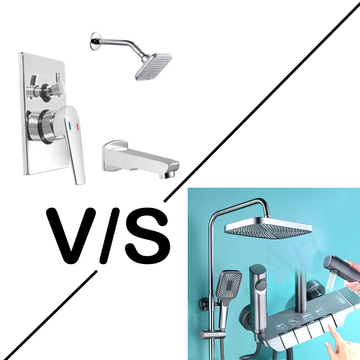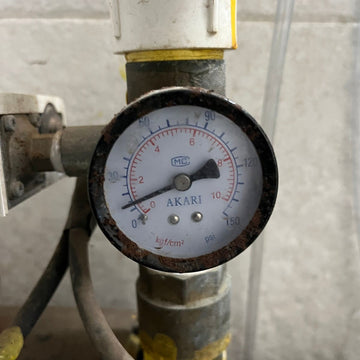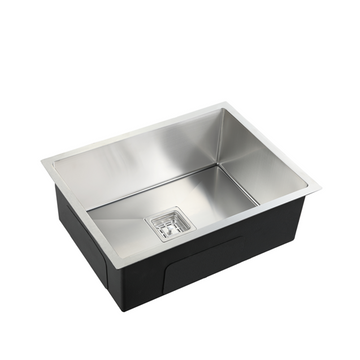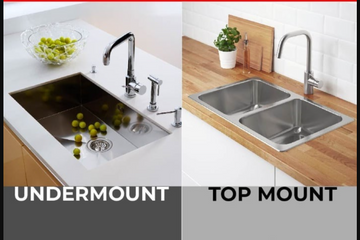🚿 6 Smart and Effective Ways to Increase Water Pressure for Showers in Indian Homes
By InArt.co.in | Buying Guide | Updated April 2025 | 6-Min Read
Whether it’s an energetic cold shower in the morning or a relaxing warm rinse after a long day, a good shower is something we all look forward to. But nothing is more frustrating than low water pressure that turns a refreshing moment into a disappointing trickle.
If you're facing this in your bathroom—especially with modern shower sets like rain showers or LED panels—this blog is for you. We’ll walk you through simple and practical solutions to improve your shower water pressure, especially tailored for Indian homes and plumbing systems.
🔍 Why Does Shower Water Pressure Drop?
Low pressure in showers can happen due to:
-
Clogged shower heads with hard water sediment (common in Indian cities)
-
Kinks or blockages in the flexible hose
-
Flow restrictors in your shower head
-
Leaks or old plumbing
-
Partially closed or faulty water valves
-
Long pipe routes from overhead tanks
✅ 6 Easy Ways to Improve Water Pressure in Your Shower
1. 🧼 Clean the Shower Head
Hard water in India often leaves behind limescale and sediment inside the shower head holes. This builds up over time and reduces flow—even if the water pressure is actually fine.
Fix:
-
Remove the shower head
-
Soak it in vinegar overnight
-
Scrub with an old toothbrush
-
Reattach and test the flow
2. 🔄 Check for Hose Kinks or Blockages
For hand showers or overhead sets with flexible hoses, kinks or bends in the pipe can restrict flow. Over time, deposits may also block the pipe internally.
Fix:
-
Straighten the pipe and inspect for bends
-
If flow is still poor, replace the pipe
3. 🛠️ Remove or Adjust the Flow Restrictor
Modern shower heads (including InArt LED showers) often include a flow restrictor to save water. But in homes with already low pressure, this can further reduce the flow.
Fix:
-
Carefully open the shower head
-
Remove or widen the restrictor (small rubber/plastic disc inside)
4. 💧 Inspect for Hidden Leaks
Sometimes, water leaks before it even reaches your shower. Small drips from joints, elbows, or underground pipes can lead to reduced pressure.
Fix:
-
Look for signs of moisture or dripping near joints and walls
-
Call a plumber if needed—it may save bigger repairs later
5. 🔧 Fully Open the Main Valve
If you’ve recently renovated or moved in, the main water valve might not be fully open. Even a slightly closed valve can limit pressure in showers.
Fix:
-
Locate your home’s or bathroom’s main water valve
-
Turn it fully open and test again
6. ⚡ Install a Shower Pressure Booster Pump
In multi-floor buildings or homes with overhead tanks, pressure may not be enough to reach certain bathrooms. A booster pump can give your bathroom the consistent pressure it needs.
Fix:
-
Get a plumber to install a small inline booster pump
-
Cost-effective and works great for showers on upper floors
📌 Bonus Tip: How to Test Water Pressure Yourself
Want to check if your pressure is enough for modern shower sets?
Try this DIY method with just a bucket!
👉 How to Measure Water Pressure at Home Using a Bucket – InArt Blog
❓ Frequently Asked Questions
Q: Can changing my shower head help improve pressure?
Yes! Many older or low-quality heads restrict flow. Upgrading to a high-performance or pressure-boosting shower head can make a noticeable difference.
Q: My other bathroom has good pressure, but this one doesn’t. Why?
Could be due to distance from the tank, blockages, or longer pipe length. Try testing both with our DIY pressure check method.
Q: Do I need a booster pump for every bathroom?
Not always. You can install it for the specific line feeding the low-pressure bathroom only.
🛁 Final Words
Modern shower panels and rain showers offer a luxurious experience—but only if the water pressure is right. If your flow feels weak, try these 6 steps. From cleaning and adjustments to simple plumbing fixes or pumps, you’ll likely restore full flow without major renovation.
✨ Ready for a power shower experience?
👉 Explore InArt Shower Sets – LED, Rainfall & More






